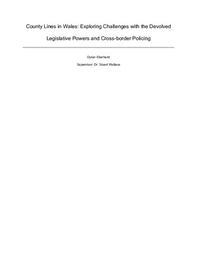A Short Summer 1 Reflection
The Research Journey
My project examined how the EU AI Act handles facial recognition technology in law enforcement contexts, specifically focusing on whether current regulations adequately protect the fundamental right to non-discrimination. I was particularly drawn to this topic because of the tension between technological advancement and rights protection – it felt like examining legislation that's trying to keep pace with rapidly evolving technology.
I used a mixed-methods approach, combining qualitative content analysis of the AI Act itself with critical legal analysis, and a targeted survey of informed active stakeholders in this field of policy/research.
Key Findings That Surprised Me
What emerged from the research was quite striking – there's a substantial gap between the AI Act's stated objectives and the mechanisms actually available to govern facial recognition technology in law enforcement settings.
The current regulatory framework suffers from fragmentation, largely due to imprecise legal terminology and large deference to member state discretion. Terms like "public security" and "bias" lack clear definitions, creating interpretative latitude that could allow for inconsistent application across the EU. Even more concerning, I found little evidence supporting the meaningful distinction between "real-time" and "post-remote" biometric identification systems, calling into question the meaningfulness of their delineations as prohibited vs high-risk uses.
Perhaps most significantly, there's a crucial disconnect between the Act's technical requirements for "bias" mitigation and established legal standards of "non-discrimination," with minimal guidance on how to bridge this gap in practice. Questions surrounding intersectionality on both the legal and technical levels add significantly to the uncertainties, arising from FRT's proliferation and it's effects in the EU.
The stakeholder survey validated these concerns, with respondents highlighting enforceability and accountability shortfalls as primary issues. There was particular consensus that real-time facial recognition in publicly accessible spaces poses acute risks for discriminatory outcomes and could have chilling effects on public life.
The Learning Curve
The early stages were more difficult than I'd anticipated. My tendency towards detail orientation occasionally manifested into procrastination and meant I spent far too much time refining methodology when a more straightforward approach would have been more practical. I kept trying to anticipate every possible direction the project might take rather than focusing on the immediate next steps, which actually slowed my progress considerably.
Learning to interpret legal texts proved particularly demanding. I'd underestimated how much skill is required to extract meaningful legal interpretation efficiently. It took time and numerous discussions with my supervisors to develop confidence in my analytical approach. The iterative process of reading, coding, and re-examining the text was essential but more time-consuming than I'd planned for.
Another challenge was maintaining analytical objectivity. Separating my personal views on surveillance and discrimination from the scholarly analysis required deliberate effort – I had to constantly check that I was presenting balanced conclusions based on evidence rather than predetermined positions. Even in striving for this standard, I accept the real possibility I may not have perfected this.
Unexpected Personal Development
What surprised me most was discovering genuine enthusiasm for critically engaging in legal text interpretation - an art of reading between the lines and giving reason to the unspoken normative assumptions, normative or not. My job was to identify gaps that mattered, and to rationalise why they mattered, and instilled purpose in the work.
The research also significantly improved my ability to communicate across different audiences and disciplines. Whether explaining technical concepts to supervisors, engaging with survey participants, or discussing findings with friends, I had to learn to translate between legal, technical, and everyday language effectively.
The weekly supervisor meetings were transformative in ways I hadn't expected. Rather than traditional feedback sessions, they became intellectual discussions that challenged me to consider multiple perspectives and avoid premature conclusions.
Research as a Leadership Experience
Interestingly, this project revealed aspects of leadership I hadn't previously considered. Much of it centred on learning to trust my own judgment while remaining open to guidance.
I developed better self-awareness about how my goals and working style intersect with research demands. This proved crucial for maintaining motivation during less engaging phases of the project and for managing the internal dialogue that comes with independent research.
The experience taught me that effective leadership often involves embracing uncertainty and being willing to pivot when initial approaches aren't working optimally. Rather than viewing these adjustments as failures, I learned to see them as natural parts of the research process.
Looking Forward
Based on my findings, I've proposed several policy recommendations to address the regulatory shortcomings I identified. These include establishing a Member State AI Council with law enforcement sector-specific committees for harmonising key definitions, developing mandatory Fundamental Rights Impact Assessments for law enforcement AI, and providing explicit clarification of permitted FRT use cases.
As the AI Act's implementation guidelines continue to develop, I'm keen to see whether the predicted regulatory divergence materialises across member states. There's clear scope for longitudinal research monitoring real-world implementation and assessing how facial recognition use by law enforcement evolves across the EU.
Final Reflections
The project taught me that good research requires balancing curiosity with critical rigour, maintaining focus while remaining open to unexpected findings, and communicating effectively across different communities of knowledge. These are skills I'll carry forward, regardless of where my academic journey leads next.





Please sign in
If you are a registered user on Laidlaw Scholars Network, please sign in